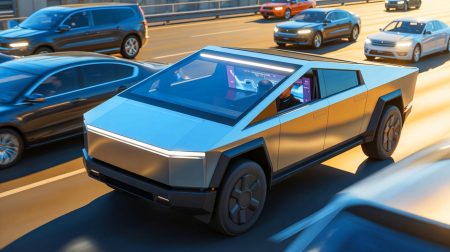| IN A NUTSHELL |
|
In recent years, the allure of self-driving technology has captured the public’s imagination, promising a future where commuting is effortless and safe. However, the reality of autonomous driving is far from perfect. The recent incident involving a Tesla Model 3 highlights the ongoing challenges and risks associated with these technologies. As these systems become more common, it is crucial to understand their limitations and the responsibilities of drivers using them.
Understanding Tesla’s Full Self-Driving System
Tesla’s Full Self-Driving (FSD) Supervised system is marketed as a cutting-edge technology that brings us closer to autonomous vehicles. Despite its ambitious name, the FSD is not a fully autonomous system. It is classified as a Level 2 driver assistance system, meaning it requires constant human oversight. The “Supervised” aspect of its name emphasizes the necessity for drivers to remain vigilant and ready to take control at any moment.
The recent accident involving a 2025 Tesla Model 3 underscores the importance of this vigilance. Equipped with the latest FSD version 13.2.8 and Hardware 4, the vehicle suddenly veered off the road, crashed into a tree, and flipped over. This incident serves as a stark reminder that despite technological advancements, the human element remains critical in ensuring safe operation.
The Incident: A Wake-Up Call for Tesla Users
The accident gained widespread attention after the driver, known by the pseudonym SynNightmare, shared his experience on Reddit, accompanied by a dramatic video. Such incidents raise significant concerns among Tesla users and potential buyers. It also fuels the ongoing debate about the safety and reliability of autonomous driving technologies.
Tesla has consistently advised users that they are still responsible for the vehicle’s actions when the FSD is engaged. This disclaimer is vital, as it places the onus on the driver to maintain control and awareness, preventing complacency that could lead to accidents. The incident with SynNightmare’s Tesla Model 3 serves as a cautionary tale for all users of autonomous systems.
Legal and Ethical Implications
With the rise of self-driving technologies, legal and ethical questions are becoming increasingly pertinent. In the event of an accident involving an autonomous vehicle, determining liability can be complex. Tesla’s stance that drivers are responsible even when the FSD is engaged highlights the current legal framework’s limitations in addressing such scenarios.
This situation raises ethical concerns about the marketing and deployment of autonomous technologies. Companies must balance innovation with transparency, ensuring that users understand the capabilities and limitations of these systems. As the technology evolves, so too must the legal frameworks that govern its use, providing clear guidelines for accountability and safety.
The Future of Autonomous Driving: Challenges and Opportunities
Despite the challenges, the future of autonomous driving holds tremendous potential. Continued advancements in technology could lead to safer, more efficient transportation systems. However, achieving this vision requires addressing the current limitations and ensuring robust safety protocols.
Enhanced driver education and clearer communication about the responsibilities associated with autonomous systems are crucial. Additionally, ongoing research and development efforts must prioritize safety and reliability, striving to minimize incidents like the one involving the Tesla Model 3. The path to fully autonomous vehicles is not without obstacles, but with careful consideration and innovation, it remains within reach.
The incident involving the Tesla Model 3 serves as a poignant reminder of the complexities and challenges associated with autonomous driving technologies. As we navigate this evolving landscape, how can we ensure that these systems are developed and deployed responsibly, balancing innovation with safety and accountability?
Did you like it? 4.4/5 (27)







Wow, scary stuff! Who’s responsible if the car crashes? Driver or Tesla? 🤔
Sounds like a scene from a sci-fi thriller! Can’t believe we’re living it.
Isn’t it ironic? ‘Full Self-Driving’…yet not really.